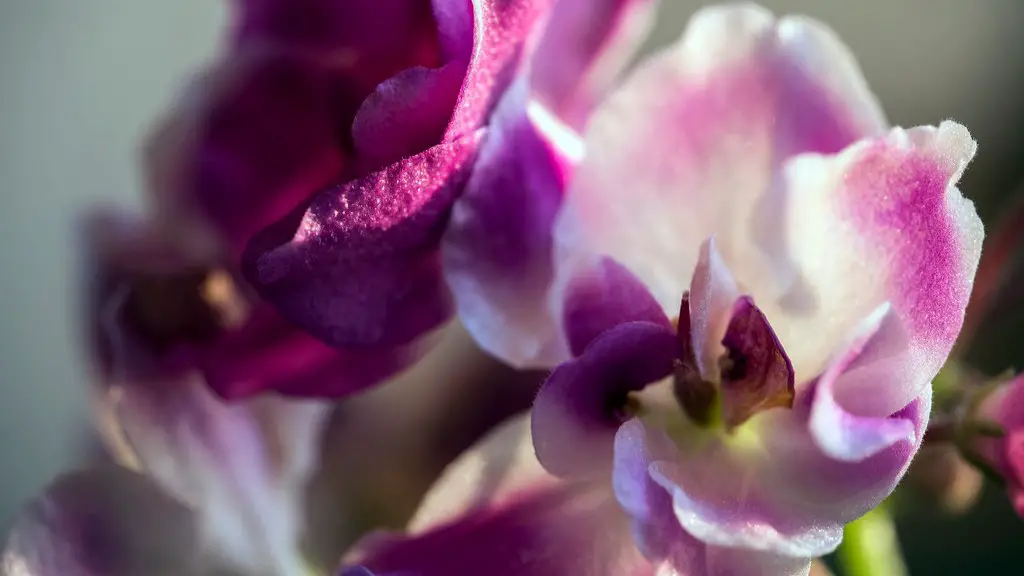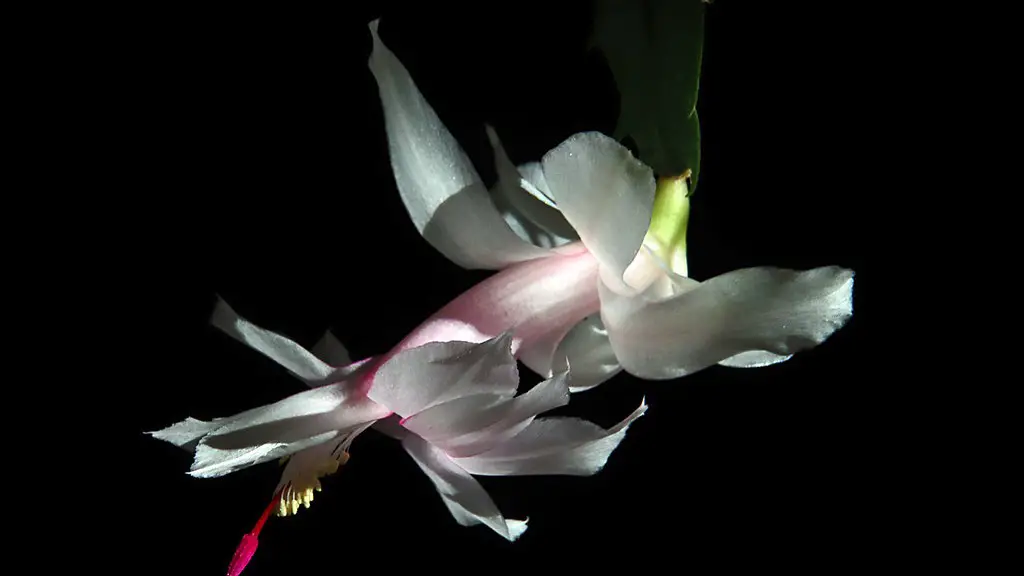The African violet is a beautiful and popular plant that is native to Africa. These plants can be found in a variety of colors, including purple, pink, red, and white. African violets are relatively easy to care for, and they make great houseplants. Here are some tips on how to take care of African violets indoors:
– Place your African violet in a location that receives indirect sunlight. Too much direct sunlight can cause the leaves to burn.
– Water your African violet when the soil is dry to the touch. Be sure not to overwater, as this can lead to root rot.
– Apply a light fertilizer to your African violet every few weeks to promote growth.
-dust the leaves of your African violet regularly to prevent pests and disease.
With a little care, your African violet will thrive indoors. Enjoy the beauty of this special plant all year round!
To care for African violets indoors, place the plant in a location with bright, indirect light and water when the soil is dry. Be sure to use a well-draining pot with African violet potting mix. Fertilize monthly with a water-soluble African violet fertilizer.
How often do you water indoor African violets?
One way to make sure your African violets are never over watered is by setting up a wicking system. This system will allow the plant to completely dry between waterings, preventing it from sitting in water and becoming oversaturated.
If you want your plants to have the best color and blooms, grow them in bright, indirect light. A plant stand three feet away from a west- or south-facing window is an ideal location. Plants will still grow when situated right beside north- or east-facing windows, but leaves will be thin and spindly, and plants less likely to bloom.
Should African violets be watered from the top or bottom
African violets are typically watered from the bottom, but either method is fine. It is important to use lukewarm or warm water, as cold water can shock the plant. If watering from the top, be careful not to get water on the leaves when the plant is in the sun, as this can cause leaf spots.
African violets require 8 hours of light per day and 8 hours of darkness per night to thrive. For long lasting blooms, 12 hours a day of natural sunlight is ideal. African violets need bright light during the day.
Should I mist my African violets?
It is important to not mist the foliage of African violets as this may cause permanent leaf spotting. Use room temperature water instead and be careful not to saturate the crown of the plant as this can lead to crown rot.
If you are unsure about the quality of your tap water, it is best to err on the side of caution and use filtered or distilled water for your African violets. Chlorine levels can fluctuate depending on the season and in some areas, tap water may have high amounts of chlorine, chloramines, or dissolved solids. All of these things may adversely affect your African violets, so it is best to use filtered or distilled water if possible.
Do African violets need bigger pots?
African violets do best when they are slightly pot-bound, so choose a pot that’s on the smaller side. A professional tip is to choose a starter pot that is about 3-4 inches in diameter for a standard African violet plant.
When it comes to taking care of african violets, it is best to avoid brushing the leaves. Repeated brushing can actually lead to decreased plant quality and size. So, the next time you are tempted to give your plant a little brush, resist the urge!
How do I know if my African violet needs to be repotted
It’s important to not let your African violet get too root-bound, as this can lead to wilting leaves. Be sure to repot into a larger pot once it has doubled or tripled in size.
If you want your plant to bloom, make sure to keep the soil around the roots moist to dry. Allow the soil to dry out before watering again to encourage blooming. Water from the bottom by placing the plastic grower’s pot in room temperature water, and allowing the plant to absorb the water (not more than 30 minutes).
How do I get my African violet to bloom again?
If you want your African violet to bloom again, there are a few things you can do. First, make sure it has enough light. It should be in a bright spot, but not in direct sunlight. Second, turn up the humidity by misting the leaves or setting the pot on a tray of wet pebbles. Third, replenish essential nutrients by fertilizing every two weeks. Fourth, keep the temperature pleasant; African violets prefer a range of 65-75 degrees Fahrenheit. Fifth, choose the right soil; African violets do best in a loose, well-draining mix. Sixth, protect from pests and disease by wiping down the leaves and keeping an eye out for pests. Seventh, constrict the roots by repotting every 2-3 years. By following these tips, you can encourage your African violet to bloom again.
Self-watering ceramic pots are an ideal choice for moisture-loving African violets. The inner pot is unglazed, allowing the water to slowly penetrate through to the soil from the outer pot. This feature helps to keep the soil moist and helps to prevent the African violet from becoming too dry.
Can you touch an African violet
It’s best not to brush the leaves of african violets because it can damage the plant and make it less healthy.
It is very important to make sure that your African Violet plant has enough water. One way to ensure this is to place the plant in a water filled tray, bowl or saucer. Make sure that at least one inch of the bottom of the pot is immersed in water or submerged in water. Wait for 20 minutes, allow the plant to absorb the water and the top soil to become moist.
What month do violets bloom?
Wild violets (viola papilionacea, viola sororia) are low-growing perennials that bloom in mid-May. While some people consider them a lovely decorative plant for gardens and landscaping, others consider them a bothersome weed because they display an aggressive behavior that is very hard to control.
If you want your African Violet to stay healthy throughout the year, you need to fertilize it regularly. During the spring and summer, you should fertilize your African Violet once every two weeks. In the fall and winter, you shouldn’t fertilize the plant at all to prevent over-fertilizing.
Conclusion
African violets are a type of houseplant that is commonly grown indoors. They are relatively easy to care for, and can thrive in a wide range of indoor environments. Here are some tips for taking care of African violets indoors:
– Light: African violets prefer bright, indirect light. Avoid placing them in direct sunlight, as this can scorch their leaves.
– Water: African violets need to be watered regularly, but be careful not to overwater them. Allow the soil to dry out slightly between waterings.
– Temperature: African violets prefer moderate temperatures and will not do well in very hot or very cold environments.
– Fertilizer: African violets need to be fertilized regularly. Use a specific African violet fertilizer, or a general houseplant fertilizer diluted to half strength.
– Pots: African violets can be potted in any type of pot, as long as it has drainage holes. Be sure to use a light, well-draining potting mix.
By following these tips, you can successfully grow healthy African violets indoors.
Taking care of African violets indoors is not difficult, but there are a few things to keep in mind. They need bright, indirect light and moist, but not soggy, soil. Be sure to let the soil dry out a bit between watering. Fertilize every other week or so with a half-strength solution of fertilizer. Lastly, avoidDrafting or disturbing the leaves too much, as this can cause the plant to lose its bloom. With a bit of care, you can enjoy these beautiful flowers indoors for many years to come.





